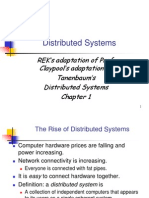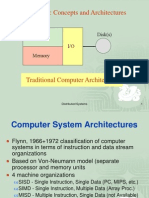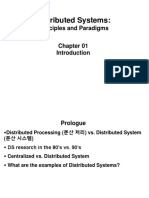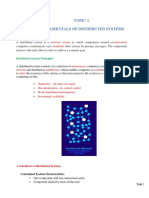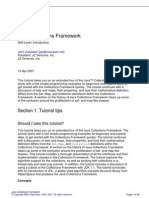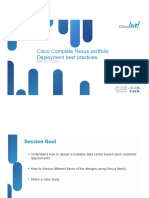0% found this document useful (0 votes)
110 views41 pagesDist Comp Intro
Distributed systems can be organized using distributed operating systems, network operating systems, or middleware. Distributed operating systems provide a high degree of transparency but require all nodes to use the same operating system. Network operating systems have a lower degree of transparency and use message passing for communication. Middleware-based systems provide a high degree of transparency while allowing different operating systems and protocols on each node.
Uploaded by
api-26977199Copyright
© Attribution Non-Commercial (BY-NC)
We take content rights seriously. If you suspect this is your content, claim it here.
Available Formats
Download as PDF, TXT or read online on Scribd
0% found this document useful (0 votes)
110 views41 pagesDist Comp Intro
Distributed systems can be organized using distributed operating systems, network operating systems, or middleware. Distributed operating systems provide a high degree of transparency but require all nodes to use the same operating system. Network operating systems have a lower degree of transparency and use message passing for communication. Middleware-based systems provide a high degree of transparency while allowing different operating systems and protocols on each node.
Uploaded by
api-26977199Copyright
© Attribution Non-Commercial (BY-NC)
We take content rights seriously. If you suspect this is your content, claim it here.
Available Formats
Download as PDF, TXT or read online on Scribd
/ 41








